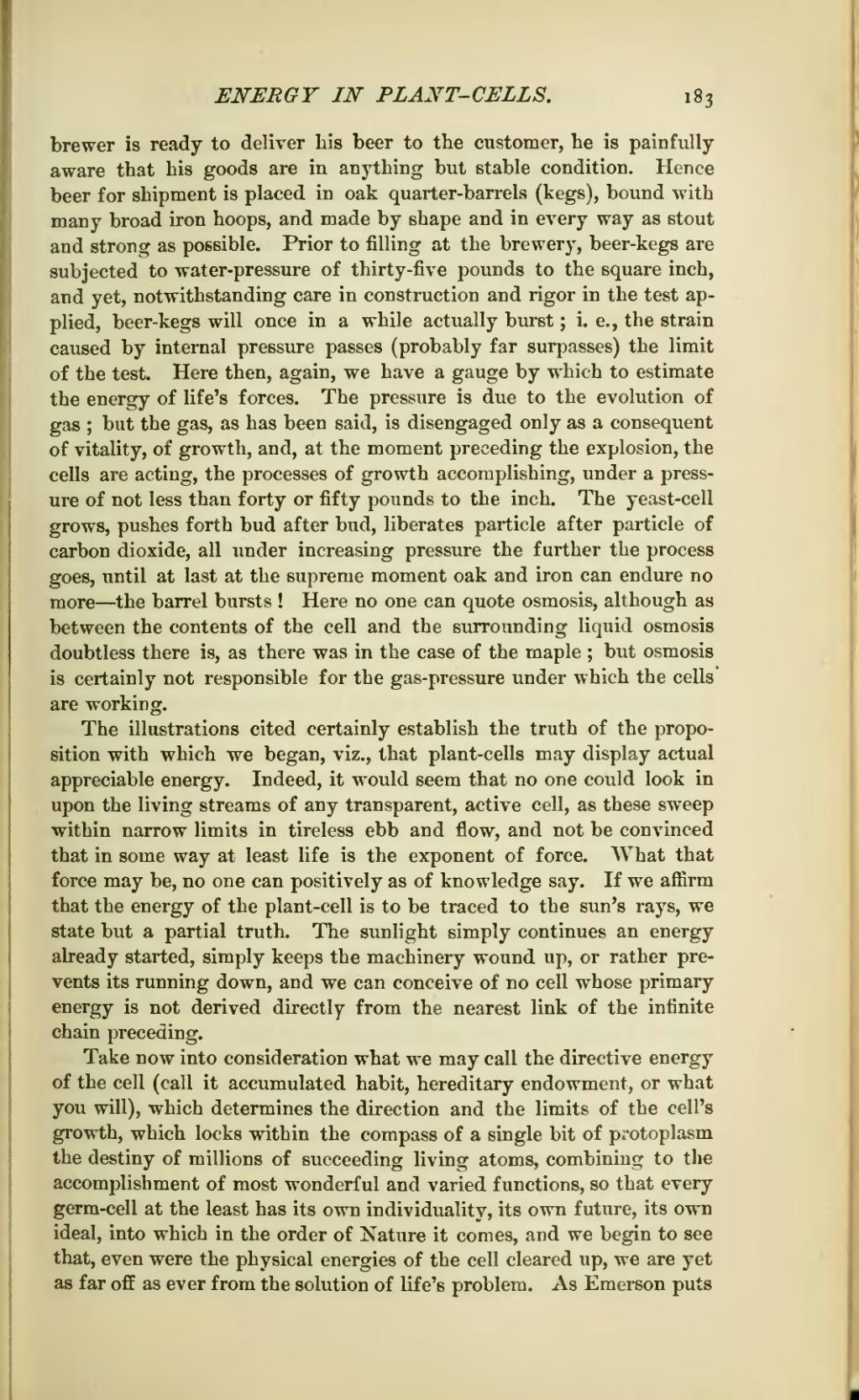brewer is ready to deliver his beer to the customer, he is painfully aware that his goods are in anything but stable condition. Hence beer for shipment is placed in oak quarter-barrels (kegs), bound with many broad iron hoops, and made by shape and in every way as stout and strong as possible. Prior to filling at the brewery, beer-kegs are subjected to water-pressure of thirty-five pounds to the square inch, and yet, notwithstanding care in construction and rigor in the test applied, beer-kegs will once in a while actually burst; i. e., the strain caused by internal pressure passes (probably far surpasses) the limit of the test. Here then, again, we have a gauge by which to estimate the energy of life's forces. The pressure is due to the evolution of gas; but the gas, as has been said, is disengaged only as a consequent of vitality, of growth, and, at the moment preceding the explosion, the cells are acting, the processes of growth accomplishing, under a pressure of not less than forty or fifty pounds to the inch. The yeast-cell grows, pushes forth bud after bud, liberates particle after particle of carbon dioxide, all under increasing pressure the further the process goes, until at last at the supreme moment oak and iron can endure no more—the barrel bursts! Here no one can quote osmosis, although as between the contents of the cell and the surrounding liquid osmosis doubtless there is, as there was in the case of the maple; but osmosis is certainly not responsible for the gas-pressure under which the cells are working.
The illustrations cited certainly establish the truth of the proposition with which we began, viz., that plant-cells may display actual appreciable energy. Indeed, it would seem that no one could look in upon the living streams of any transparent, active cell, as these sweep within narrow limits in tireless ebb and flow, and not be convinced that in some way at least life is the exponent of force. What that force may be, no one can positively as of knowledge say. If we affirm that the energy of the plant-cell is to be traced to the sun's rays, we state but a partial truth. The sunlight simply continues an energy already started, simply keeps the machinery wound up, or rather prevents its running down, and we can conceive of no cell whose primary energy is not derived directly from the nearest link of the infinite chain preceding.
Take now into consideration what we may call the directive energy of the cell (call it accumulated habit, hereditary endowment, or what you will), which determines the direction and the limits of the cell's growth, which locks within the compass of a single bit of protoplasm the destiny of millions of succeeding living atoms, combining to the accomplishment of most wonderful and varied functions, so that every germ-cell at the least has its own individuality, its own future, its own ideal, into which in the order of Nature it comes, and we begin to see that, even were the physical energies of the cell cleared up, we are yet as far off as ever from the solution of life's problem. As Emerson puts

